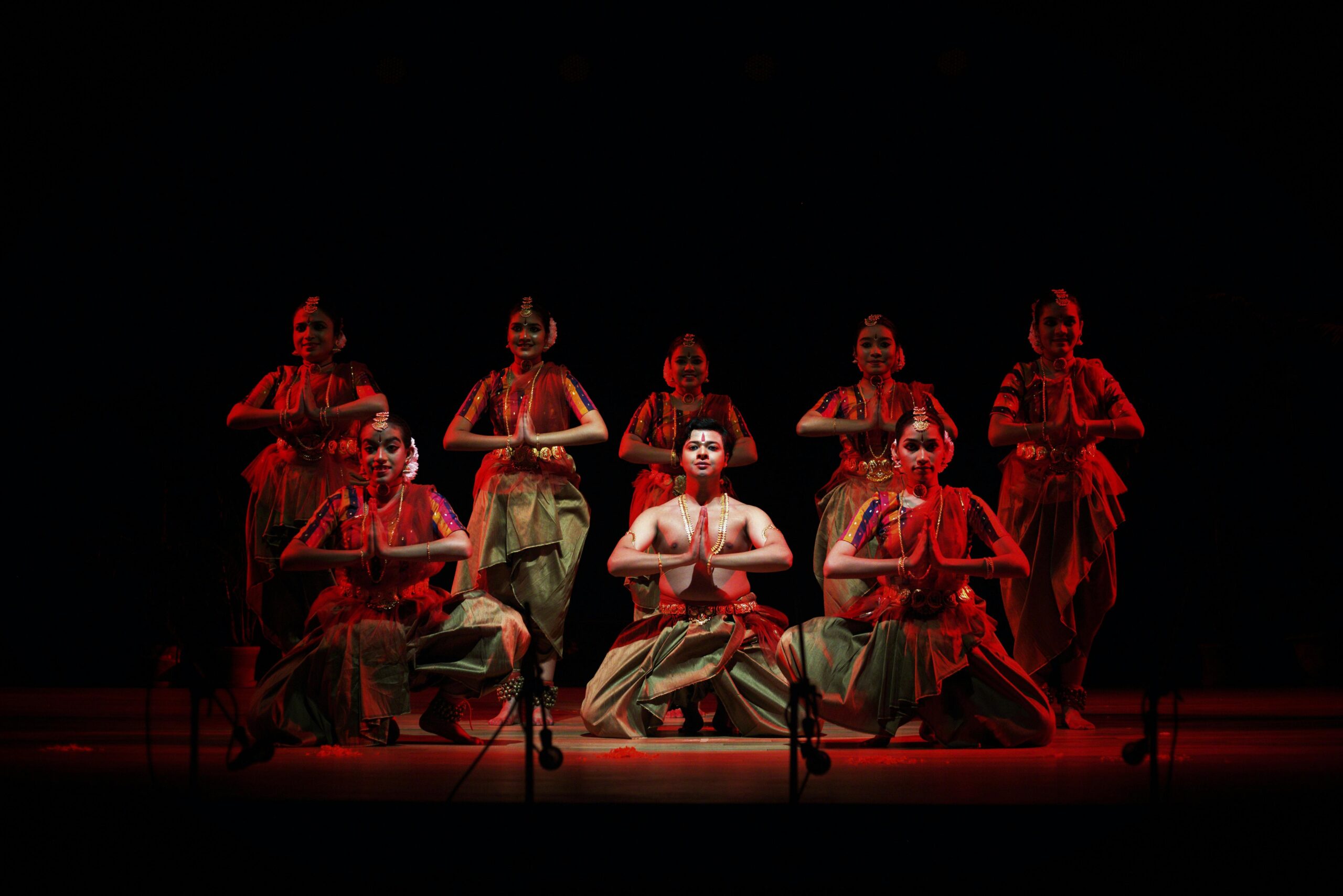India has long excelled in captivating the world through its rich cultural heritage, employing soft power to foster global connections. From the soothing melodies of the sitar to the intricate movements of Kathak dance, from the aromatic allure of saffron-infused biryani to the vibrant narratives of Hindi cinema, India’s cultural exports invite global audiences to experience its diverse traditions. India influences through culture, captivates through tradition, and leaves an imprint that lingers for generations.
From the hypnotic rhythm of a tabla to the grace of a Bharatanatyam dancer, from the warm embrace of a saffron-laced chai to the thrill of watching an Indian athlete break global records, India has a way of making its presence visible on the world map.
I grew up in a home where Bollywood melodies hummed in the background, the scent of cardamom and cloves filled the air, and my grandmother started her mornings with sun salutations that seemed more like an ancient ritual than mere exercise. It wasn’t until I traveled abroad that I genuinely understood the magnetism of Indian culture. From a café in Prague playing A.R. Rahman’s ‘Jai Ho’ to a yoga retreat in Montreal led by an instructor who had never set foot in India, I realized something profound: India’s influence is everywhere, and it doesn’t need to ask permission to exist.
Soft Power: India’s Greatest Weapon that’s not a Weapon at all
As conceptualized by Joseph Nye, soft power refers to the ability to influence others through attraction and persuasion rather than coercion. India embodies this by seamlessly integrating its culture into the global frame. When a Londoner enjoys his morning chai, an Argentine practices yoga in the evening, or an Egyptian watches a Hindi film, they engage with facets of Indian culture, often without conscious realization. This pervasive presence underscores India’s strategy of making itself indispensable to people’s daily lives worldwide.
Weaving Tradition into Global Fashion
India’s cultural diplomacy has become integral to global fashion and craftsmanship. Indian textiles, renowned for their intricate handwoven patterns and rich heritage, have found their way into luxury couture houses across the world. From the delicate Pashmina shawls of Kashmir to the opulent Banarasi silk saris, these fabrics are not just garments but living testaments to centuries of artisanal mastery.
Luxury fashion brands like Hermès, Louis Vuitton, and Dior have embraced India’s textile traditions, incorporating handcrafted fabrics into their global collections, subtly embedding Indian tradition into high fashion. Indigenous art forms like Madhubani paintings and Warli art have been showcased in international museums and galleries, preserving India’s artistic legacy while inspiring modern design. This intersection of heritage and commerce is more than just cultural appreciation; it is a form of economic soft power that fuels global demand for Indian craftsmanship and empowers artisans back home.
Yoga: The Most Peaceful Takeover in History
Yoga’s global rise is perhaps the most peaceful and profound example of cultural diplomacy. Once practiced within ancient India’s quiet establishments, it has become an intrinsic part of modern wellness culture worldwide.
India’s initiative to establish an International Yoga Day with the United Nations was more than a symbolic gesture; it was a strategic move highlighting India’s contribution to global health, mindfulness, and spiritual well-being. Today, yoga studios are found in every corner of the world, from Paris to São Paulo, from Tokyo to Toronto.
During a visit to a small town in Italy, I met a group of locals who had learned Sanskrit, not because they were linguists, but because they wanted to chant mantras with accuracy during their yoga practice. That moment remained with me—a language once confined to Indian scriptures was now thriving in a different continent, driven purely by the global love for yoga.
Simultaneously, India’s Ayurveda and wellness retreats have become a significant force in economic diplomacy. With the global wellness industry boom, destinations like Kerala and Rishikesh are attracting wellness seekers worldwide, integrating Ayurveda, yoga, and holistic healing into mainstream tourism. International celebrities and influencers endorsing Ayurvedic treatments have further propelled its status, turning ancient Indian wisdom into a modern, revenue-generating global phenomenon. India’s cultural exports aren’t just shaping perceptions; they’re reshaping economies, proving that soft power isn’t just symbolic; it’s also highly profitable.
Beyond Bollywood, A Global Story
For decades, Bollywood has been India’s most potent cinematic export. But beyond the glitz of Hindi films, regional cinema from India has also begun making waves worldwide. Thanks to streaming platforms and global film festivals, Tamil, Telugu, Malayalam, and Marathi films are now reaching international audiences.
For example, the blockbuster Baahubali, a Telugu-language epic, shattered records across multiple continents.
India’s cultural diplomacy isn’t just about influence; it’s also about economic impact with tangible benefits across industries. The global appeal of Indian cinema has led to several high-profile Bollywood co-productions with international studios, boosting foreign investment in the Indian entertainment industry. Films like Slumdog Millionaire and RRR have won prestigious awards on global platforms and opened doors for cross-border film collaborations, drawing funding from Hollywood and European production houses.
Indian Sports: The Underrated Pillar of Soft Power
For years, Indian sports diplomacy was limited to cricket, where India’s dominance created strong ties with countries like England, Australia, and Pakistan. But today, India is making its mark in a plethora of sports.
Programs like Khelo India, the Fit India Movement, and the Target Olympic Podium Scheme (TOPS) have nurtured a generation of athletes rewriting India’s sports narrative.
- Neeraj Chopra, India’s first Olympic gold medalist in athletics, put Indian javelin mastery on the world map.
- V. Sindhu’s badminton prowess has made her a household name in China, Indonesia, and Denmark—nations where badminton is almost a religion.
- Rameshbabu Praggnanandhaa and Gukesh Dommaraju are leading India’s chess renaissance, with Gukesh recently becoming the youngest world chess champion at 18.
- Pro Kabaddi League has revived an indigenous sport, making it a global event with the participation of players from Iran, Korea, and Kenya.
This demonstrates the application of soft power by producing new champions who secure medals and enhance India’s reputation globally.
Food: The Spice Route, Reimagined
If war is fought on battlefields, peace is brokered around dining tables. And India, with its riotous culinary diversity, has been feeding its way into global affections for centuries.
From the naan-and-curry houses of London to the Dosa joints of Silicon Valley, Indian cuisine has achieved what most governments can only dream of—being indispensable. Even the most politically indifferent person will swear allegiance to a good butter chicken. And while India may not officially govern these foreign lands, it owns their palates and a piece of their culture.
Indian food diplomacy isn’t just about satisfying cravings; it’s about rewriting histories. We must not forget that the British Empire once waged wars for India’s spices. Fast forward to today, and Britain still imports India’s food, festivals, music, and words into everyday life.
India’s Colorful Tale of Festivals
India doesn’t just wait for the world to come knocking. It packs its colors, chaos, music, and magic into a suitcase and takes it on tour. The Festival of India event, held in different countries, is a grand display of everything from traditional dance performances to ancient craft workshops.
I once attended a Festival of India event in Berlin, where Germans in traditional Indian attire swayed to the beats of a Dhol. The sight was surreal, a seamless blend of cultures, a moment of pure cross-border connection.
India actively promotes its culture through international festivals and events. The upcoming World Audio Visual & Entertainment Summit (WAVES) in Mumbai aims to position India as a global hub for media and entertainment. Initiatives like the ‘Create in India’ challenge encourage innovation and creativity, inviting international artists to collaborate and celebrate India’s rich cultural tapestry.
Digital Power
India’s cultural diplomacy is rapidly evolving into the digital sphere, leveraging technology to deepen its global influence. In an era where YouTube vloggers, Instagram influencers, and AI-driven content dominate cultural narratives, India’s presence in the digital creator economy has become a powerful soft power force. Indian content creators, from chefs popularizing regional cuisines to musicians remixing classical ragas for global audiences, are shaping international perceptions of India in real time.
Streaming platforms like Netflix, Amazon Prime, and Hotstar are playing a crucial role in taking Indian cinema and storytelling beyond borders, with shows like Delhi Crime and Kota Factory winning international accolades with cult status, having resonated in unexpected markets like Japan and the U.S.
The Big Question: Does Any of This Work?
Absolutely. Here’s why.
- India’s Image Makeover
For years, India was boxed into tired stereotypes, either the mystical land of snake charmers or the overpopulated land of chaos. But through its cultural diplomacy, India has rebranded itself as a powerhouse of creativity, innovation, and depth. When an Italian executive takes Ayurvedic wellness retreats seriously, or a Korean teenager fangirls over an Indian movie star, that’s real, measurable influence.
- Strengthening International Relations
Culture softens borders. Indian cultural exports have helped strengthen diplomatic relations with countries where formal politics might hit roadblocks. A shared love for the Indian film industry has created bridges between India and nations like Afghanistan and Russia, proving that emotional connection often succeeds where geopolitics struggles.
- Tourism, Trade, and Investment
From an economic standpoint, cultural diplomacy translates into serious revenue. The allure of India’s heritage brings millions of tourists, the popularity of Indian cinema opens markets for co-productions, and the global love for Indian textiles and craftsmanship fuel export industries.
According to recent tourism data, many foreign visitors cite India’s culture, spirituality, and history as their primary reasons for travel, translating into billions in revenue. Cultural capital isn’t just symbolic; it’s profitable, too.
The Path Forward: Strategic Cultural Engagement
India continues to enhance its cultural diplomacy through strategic initiatives. The ‘Create in India’ campaign and the WAVES summit exemplify efforts to foster creativity and position India as a leader in the global entertainment industry. These platforms provide opportunities for cultural exchange, innovation, and collaboration, reinforcing India’s commitment to sharing its heritage with the world.
Prime Minister Narendra Modi has actively promoted Indian culture globally, presenting traditional artifacts as diplomatic gifts, showcasing cultural sites to foreign dignitaries, and advocating for international recognition of Indian practices like yoga.
In a world where cultures blend and identities evolve, India’s soft power proves that actual influence comes from connection—an everlasting power.
The views and opinions expressed here belong solely to the author and do not reflect the views of BlueKraft Digital Foundation.







